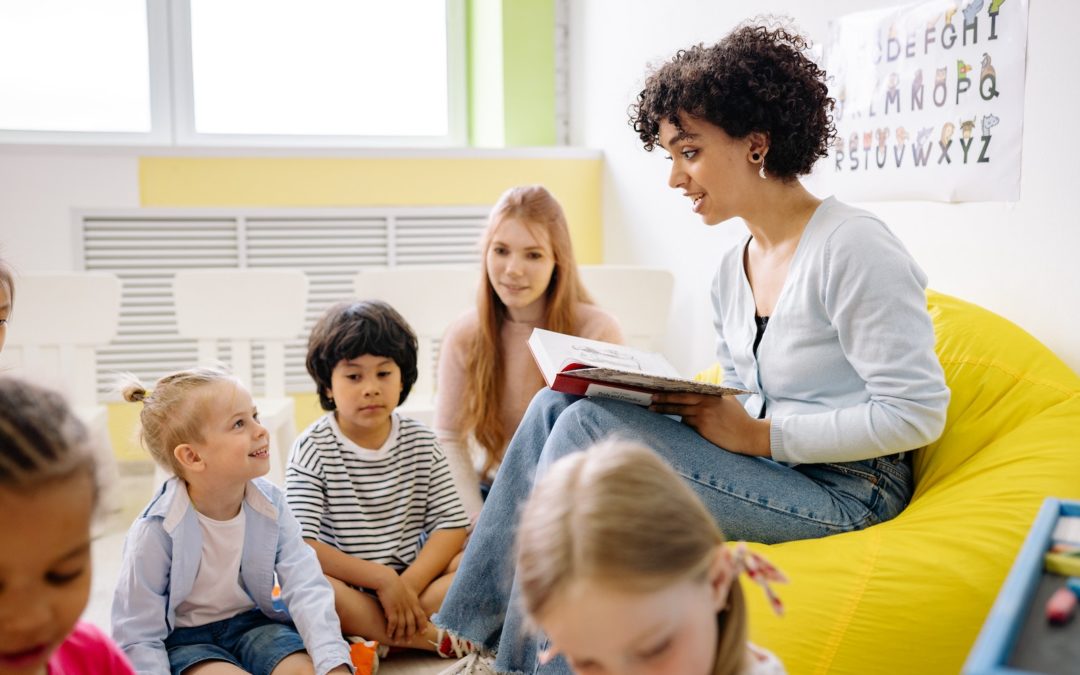“What about a story?” said Christopher Robin.
“What about a story?” I said.
“Could you very sweetly tell Winnie-the-Pooh one?”
“I suppose I could,” I said. “What sort of story does he like?”
“About himself. Because he’s that sort of Bear.”
“Oh, I see.”
“So could you very sweetly?”
“I’ll try,” I said.
–from Winnie the Pooh, A.A. Milne
The words once upon a time will never lose their magic. Children and adults alike know and enjoy the value of a good, well-told story. As educators, we know that anytime we can use narrative to elaborate on the facts we are teaching, our students are more likely to not only grasp the concepts but also retain them. Our students delight in hearing our personal stories because it gives them a glimpse into our humanity outside of the classroom. But sometimes, it may be necessary and helpful to draw examples and narratives from other sources, such as children’s stories. Using children’s literature can be a springboard for greater instructional opportunities in your classroom, both with young children and older students.
Why does it work? Why can we successfully use a children’s story to make our point in the classroom, whether with small children or with older students (even adults)?
Everyone can connect with the element of story because we all have one ourselves. Our own story is sometimes funny, sometimes sad, sometimes beautiful, sometimes ugly, but always complicated. The power of hearing a story lies in the connections we instinctively make between its narrative and our own story. When we listen to stories about Winnie-the-Pooh’s struggle to find honey, or Sam-I-Am’s stubborn persistence about trying something new, or Charlotte’s loyal determination to save Wilbur, or Susan and Lucy’s first close-up encounter with Aslan, we hear and understand because we see connections to our own stories or to those happening around us. I would venture to guess that when you read these example story scenarios, even in the space of a few short words, you immediately remembered the story and its connection to your own life story.
When a teacher shares a simplified truth expressed in story form, there is suddenly a wealth of opportunity to delve into greater understanding of deeper truths. With small children, it may be as simple as seeking out the basic truth of the story and considering how it is true (or not) for each listener: Winnie-the-Pooh tries different ways of getting honey, but not all of his ideas work. Have any of your ideas failed? What did you learn from that experience? For older students, it could look like a discussion of the author’s worldview expressed in the repeated theme of the story, drawn into a study of the students’ own worldview. E.B. White shows Charlotte as loyal, determined, faithful, even sacrificial, in her friendship with WIlbur. Why does White highlight these things in a good friend? What kinds of values do you see as most important in friendship? Questions can help tie the story to the greater concept the teacher hopes to express: How is this story reflected in our own stories? How does the simple message of this story seek to shape our thinking about our personal opinions? How does this story help us better understand and empathize with the people around us?
Perhaps the greatest value of using children’s literature in the classroom is the strong biblical connections that can be developed. As teachers, we seek to capture the heads and hearts of our students in an effort to grow and stretch their knowledge, always through the lens of scripture. When we read a simple children’s story to our students, we can help them see the value of their part in God’s Story. Or we can elaborate on the reality of our lives in this world in light of our citizenship in God’s kingdom. What better way to teach than using the method that God Himself uses: God chooses to make Himself known to us through His Story in scripture, and all throughout the gospels, we see Jesus choose to teach most often through the genre of story.
So, as Christopher Robin says, “What about a story?” Why not switch things up a bit and start class by reading a story to your students? Make a plan to direct the discussion that comes from the story, but don’t be afraid to see where it will take you and your class. “Oh, the places you’ll go!” storyteller Dr. Seuss said, and he knew what he was talking about! When it comes to teaching, reading children’s stories will add greater depth and energy to your instruction and ultimately to your students’ growth.
A few ideas to get you started:
- Winnie-the-Pooh by A.A. Milne – (select a chapter) themes include persistence, success v. failure, fear of the unknown, value of friendship
- Green Eggs and Ham by Dr. Seuss – persistence, willingness to try new things
- A Bad Case of Stripes by David Shannon – concern about others’ perception of us
- Imogene’s Antlers by David Small – how to respond to difficult situations
- Stuck by Oliver Jeffers – problem-solving
- Alexander and the Terrible, Horrible, No Good, Very Bad Day by Judith Viorst – perspective, how to respond to difficult situations
- The Giving Tree by Shel Silverstein – loyalty, trust, friendship
- A Sick Day for Amos McGee by Philip C. Stead – the effects of being responsible and faithful
Photo by Yan Krukov




